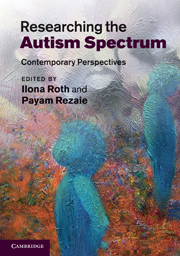Book contents
- Frontmatter
- Contents
- Preface
- Foreword
- List of Contributors
- Introduction
- Part I Classification and Diagnosis
- Part II Genetics, Neurology and Biochemistry
- Part III Cognition, Development and Education
- 7 Psychological models of autism: an overview
- 8 Cognitive flexibility in autism: a social-developmental account
- 9 Language in autism spectrum disorders
- 10 Memory in autism: binding, self and brain
- 11 Measuring executive function in children with high-functioning autism spectrum disorders: what is ecologically valid?
- 12 Autism spectrum disorders in current educational provision
- Index
- Plate section
- References
11 - Measuring executive function in children with high-functioning autism spectrum disorders: what is ecologically valid?
Published online by Cambridge University Press: 04 February 2011
- Frontmatter
- Contents
- Preface
- Foreword
- List of Contributors
- Introduction
- Part I Classification and Diagnosis
- Part II Genetics, Neurology and Biochemistry
- Part III Cognition, Development and Education
- 7 Psychological models of autism: an overview
- 8 Cognitive flexibility in autism: a social-developmental account
- 9 Language in autism spectrum disorders
- 10 Memory in autism: binding, self and brain
- 11 Measuring executive function in children with high-functioning autism spectrum disorders: what is ecologically valid?
- 12 Autism spectrum disorders in current educational provision
- Index
- Plate section
- References
Summary
Clinical experience and anecdotal written accounts suggest that school-age children with high-functioning autism spectrum disorders (ASD) have difficulties which can be described as ‘executive dysfunction’. Problems with organisation, planning and task completion impede academic achievement and cause disruption in daily routine. The authors review research of executive function in this population and conclude that clinicians will find little in the scientific literature to guide them in neuropsychological assessment and remediation. They describe their study of 23 clinic-referred children (18 boys, 5 girls; mean age of 9) illustrating the challenges facing clinicians who would measure executive function. Tests of executive function (including the NEPSY and the BADS-C) were administered. Parent and Teacher questionnaires (DEX-C, BRIEF and VABS) were completed. Scores on tests of executive function and other areas of cognition were found to be in the average or above average range. In contrast, responses on both teacher and parent questionnaires indicated significant executive dysfunction. Parents' responses on the BRIEF and on the DEX-C were not correlated with teacher responses on the BRIEF. The authors consider the importance of a “halo effect” on questionnaire responses and challenge the notion that questionnaire measures have more ecological validity than laboratory measures. Suggestions for future research include observation, interviews and graded modification of the testing environment.
Introduction
Not enough attention is given to identifying individual neuropsychological deficits of children with ASD in the clinical setting with the aim of remediation despite being recommended by the National Autism Plan for Children (2003).
- Type
- Chapter
- Information
- Researching the Autism SpectrumContemporary Perspectives, pp. 347 - 363Publisher: Cambridge University PressPrint publication year: 2011
References
- 2
- Cited by



